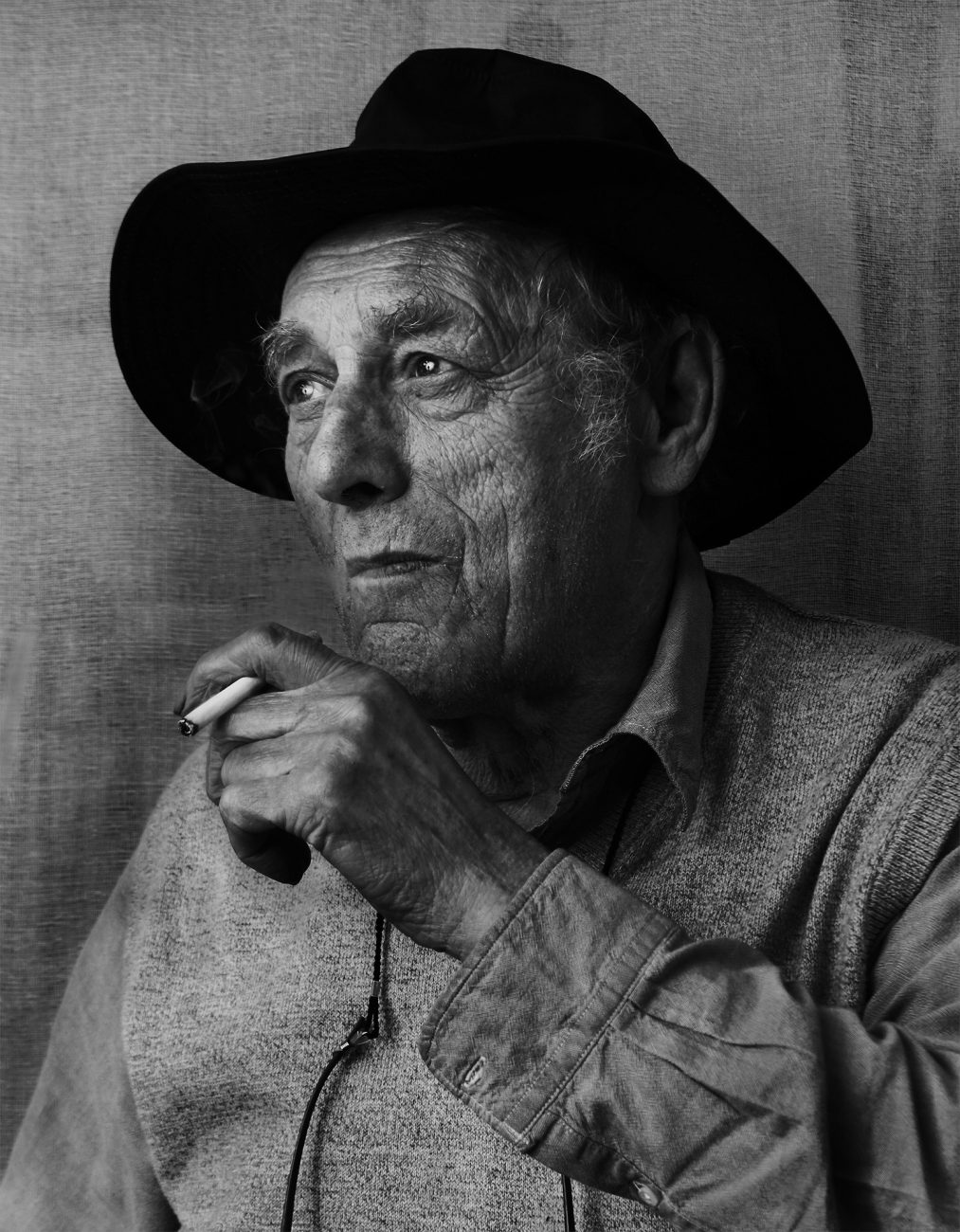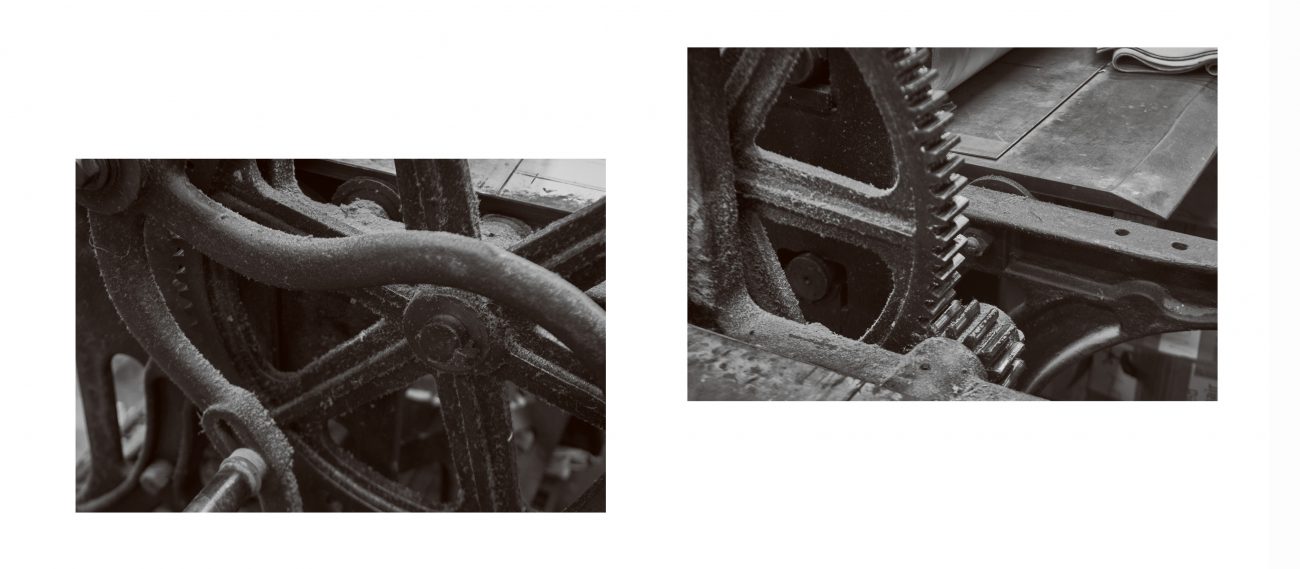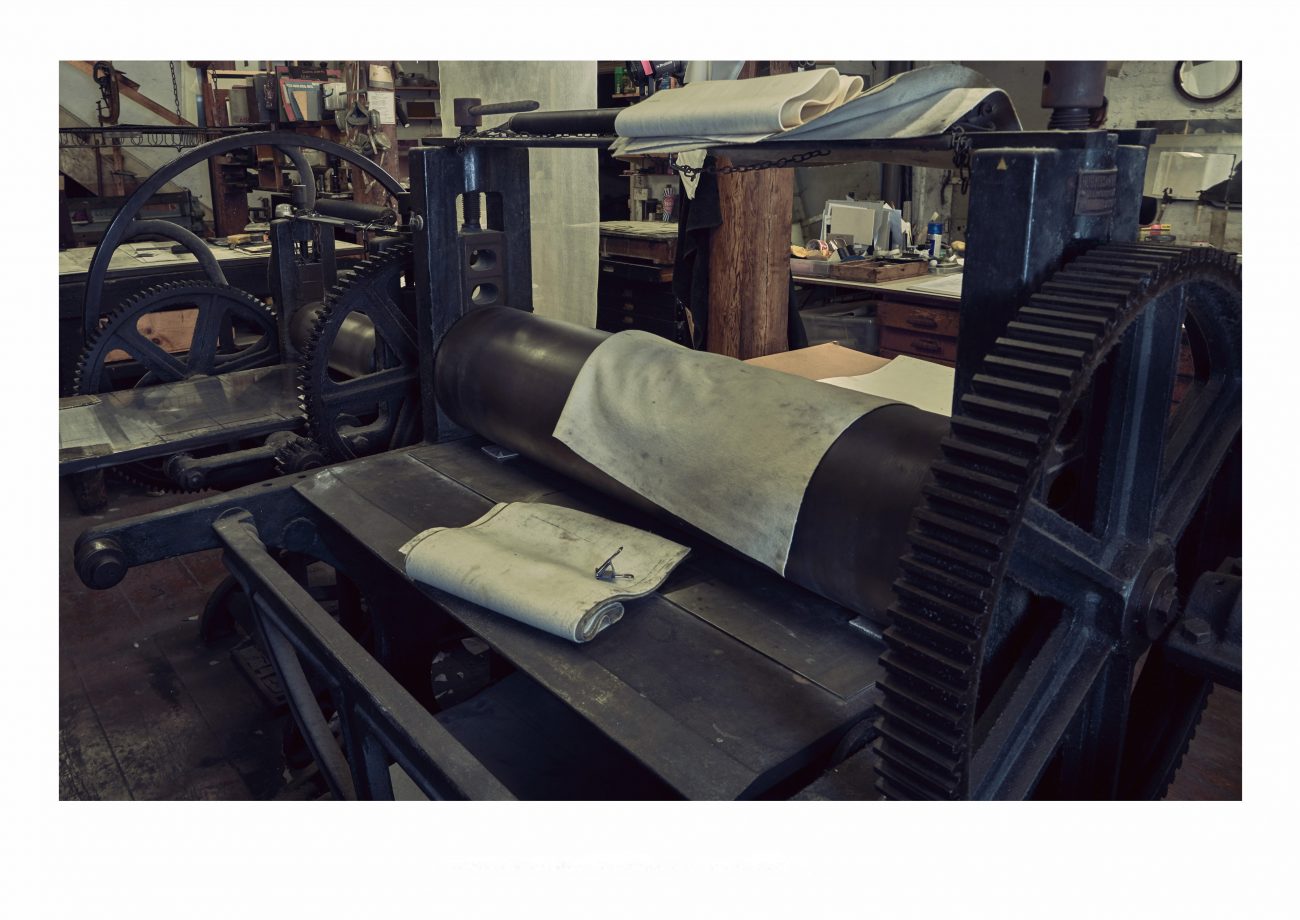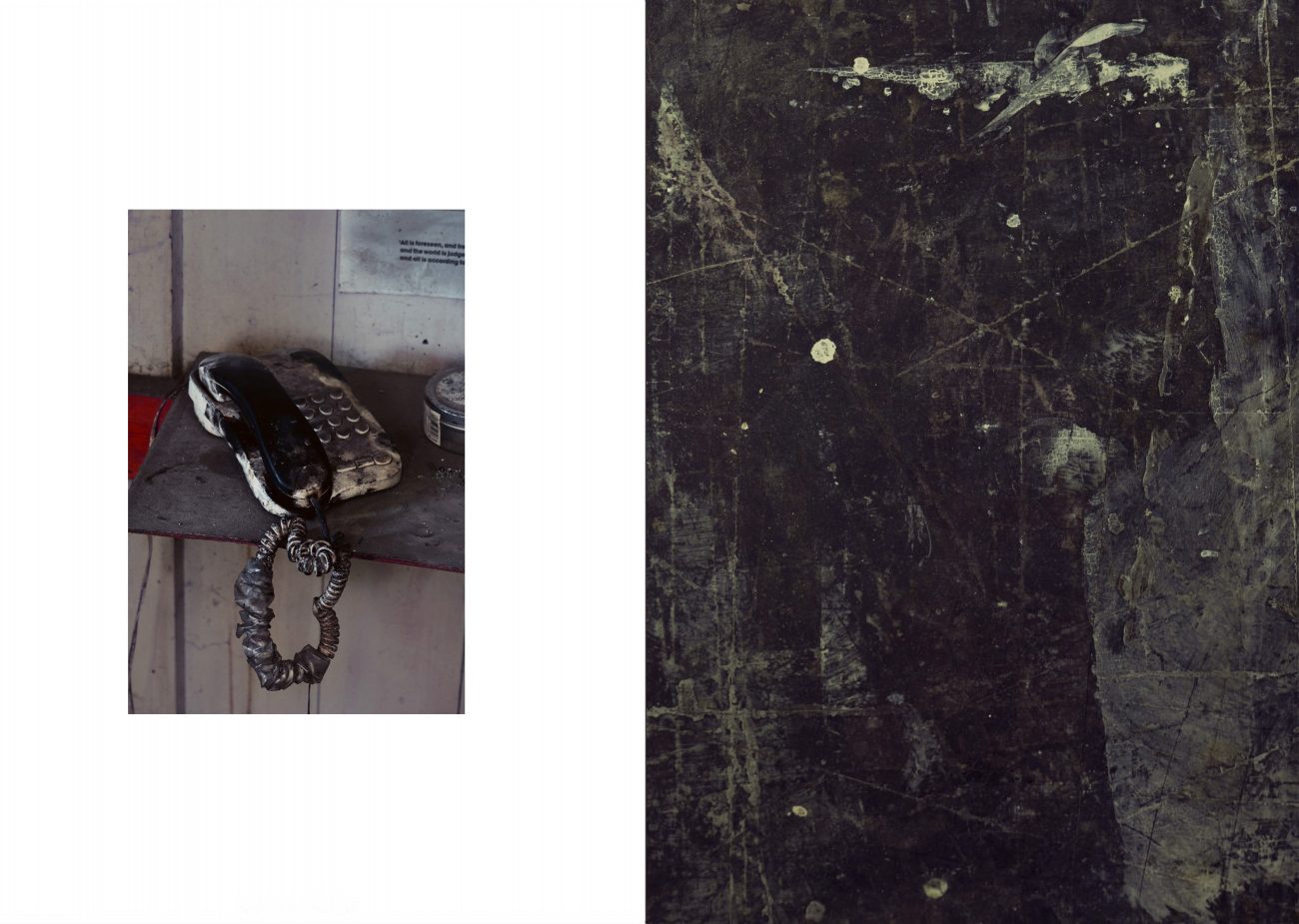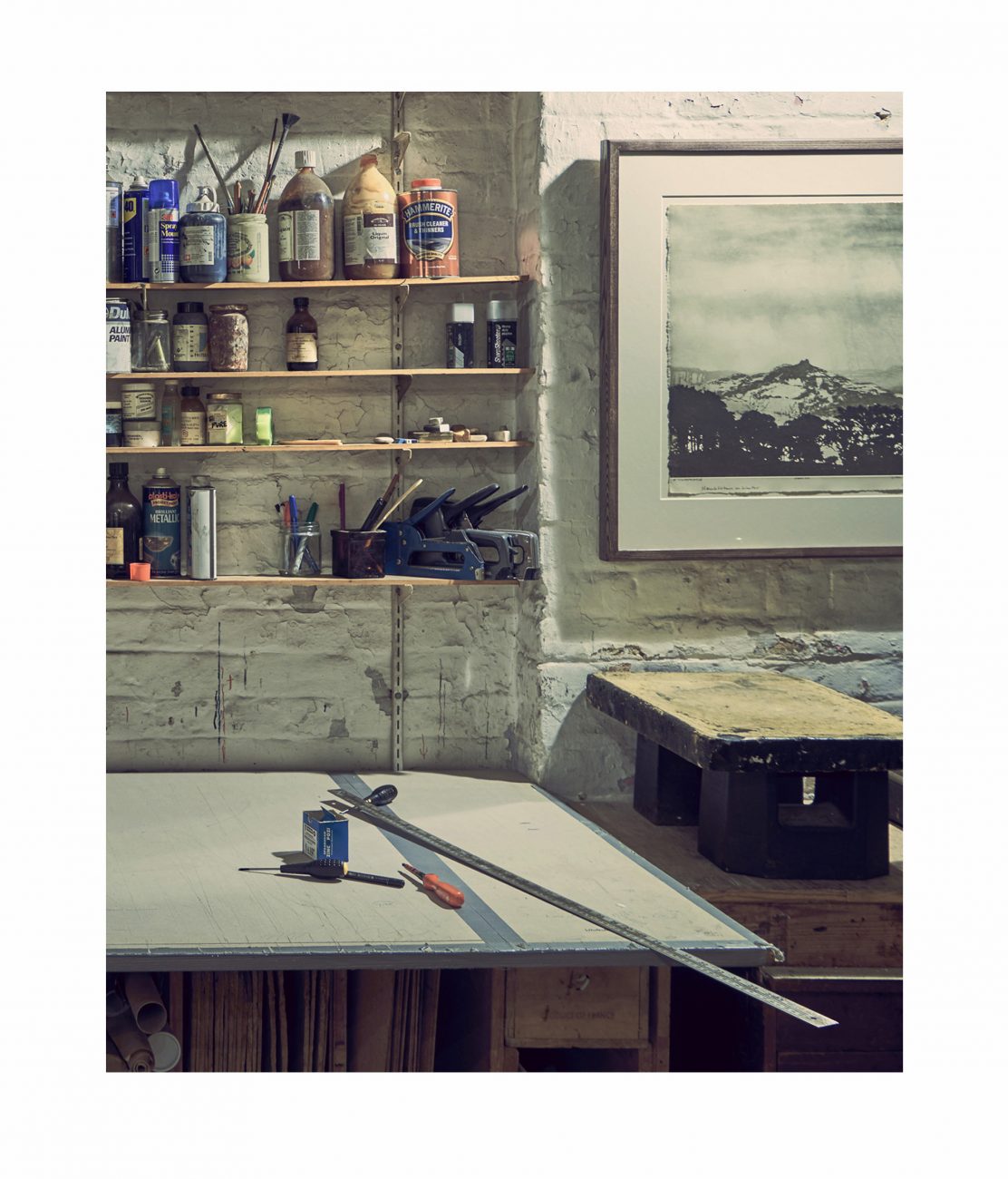His face is lined like the topographic map hanging upstairs in his London studio. Set against a blanched brick wall, it hides here under a forest of plastic pins. Red, yellow, green and blue. Each one marking a remote and disremembered part of Greater Britain.
Once upon a time, Norman journeyed to immortalise this hallowed ground.
And now limbo frames the room – small windows opening out over a priceless view of storm-laden, monochromatic landscapes. Black, white and a kaleidoscope of grey.
Old earth emerges from these paper panes: lonely islands, dark mountains and wicked rocks rising abruptly out of the sea. Places without tea bags or Silk Cut cigarettes. Places without art galleries, cash machines or ticking clocks. Places where mankind is, almost, forgotten.
Alone, the elements are the heroes of epic sagas rhythmed by passing seasons. Each act slowly scarring the land, leaving behind a subtle history of battles waged between wind, rain and briny waves.
You can read similar stories on Norman’s skin. Sharp features have eroded away, fading into blurry impressions on this heavily textured canvas. A proud forehead is now an exposed promontory, scored by striations, while high cheeks have slowly subsided into creased bedrock gullies. Here and there, greyish hairs stretch out defiantly from nooks and ledges, like wind-battered shrubs.
Time is a unique artist but its creations can be difficult to admire, especially when you become the medium. So imagine what Norman feels each morning, as he scrutinises life’s latest brushstrokes in the bathroom mirror.
Is it akin to surveying the Great Stac of St Kilda at dawn, unmoved by yet another ferocious midnight tempest? Or rather like coming face-to-face with the ghost of someone, you used to know? A man who frittered away his youth searching for unknowables at the edge of his water-locked motherland. One part rock and roller, two parts salt of the earth.
A casual observer would say this human masterpiece is a rather sad portrait and certainly, there’s no denying Norman openly wears his pain: past and present. You can almost feel the weight of each tear that has slowly snaked down from its source, whittling away a long melancholy mask for him to hide behind.
Yet at the same time, small clues hint at a different reading. Delicate creases around his lips and eyes, so faint they’re almost invisible, boast of wicked humour that can flicker like a gas flame. The type that starts with a silent smirk, grows into a claret-stained smile and ends in a loud chest-heaving roar. Far from providing any answers, Norman’s unsettling blue eyes are a mystery all of their own. These clever, steely needles are capable of stabbing you with their stare but then, just as quickly flickering like lightning, diluting into milky mist and losing themselves in the distance. Almost like a newborn trying to make meaning of the abstract shapes swimming in front of its vision.
Maybe he’s looking for a particular beauty that’s over there, just beyond the edges of our sight. Something that’s impossible to translate but worthy enough for someone to spend a lifetime shifting paint, ink and acid, just on the off-chance of capturing it.
Here is perhaps Norman’s only solid defence against the ravages of mortality. The unveiling of an eternal truth that’s always been hidden in plain sight. The gargle of a toddler’s chuckle, the twinkle in an old man’s eyes and an unexpected ray of sunshine that sluices through menacing, heavy-storm clouds on an otherwise unremarkable Tuesday afternoon. Such pure and perfect light that it’s capable of turning the blackest rock into shimmering silver.
Text by John Silcox
